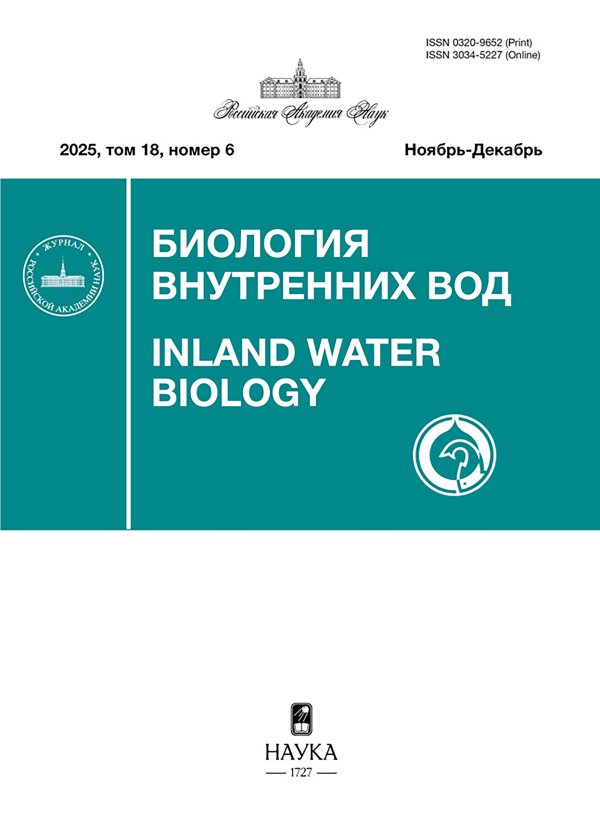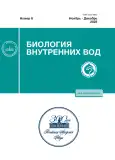Генетическая изменчивость среди трех видов рода Erythroculter
- Авторы: Дэлян Цяо D.1,2, Чэнь Ю.1,2, Дэн Х.1,2, Хе С.1,2, Хэ Л.1,2
-
Учреждения:
- Колледж биологической и фармацевтической инженерии, Западно-Аньхойский университет
- Аньхойская инженерная лаборатория по сохранению и устойчивому использованию ресурсов традиционной китайской медицины
- Выпуск: № 6 (2023)
- Страницы: 871-872
- Раздел: ИХТИОЛОГИЯ
- URL: https://journals.rcsi.science/0320-9652/article/view/232395
- DOI: https://doi.org/10.31857/S032096522306027X
- EDN: https://elibrary.ru/LURQPN
- ID: 232395
Цитировать
Полный текст
Аннотация
Род Erythroculter (Cypriniformes, Cyprinidae, Abramidinae) cчитается одним из наиболее значимых родов промысловых видов пресноводных рыб, обитающих в Китае. Однако имеется очень мало информации о генетических вариациях среди видов Erythroculter, что затрудняет эффективное управление ими. В связи с этим, проанализированы микросателлитные маркеры и последовательности митохондриального COII и D-петли для изучения генетической изменчивости среди трех видов рода Erythroculter. Результаты показали, что 11 микросателлитных локусов были эффективно амплифицированы, а размер аллелей составлял 110–350, 94–338 и 86–384 пн у E. ilishaeformis, E. dabryi и E. mongolicus соответственно. Среднее число аллелей достигало 5.82, 5.73 и 6.45 на локус для E. ilishaeformis, E. dabryi и E. mongolicus соответственно. Фрагменты COI и D-петли были 675 и 929 пн соответственно. На основе информационного индекса Шеннона, гетерозиготности, содержания полиморфной информации и индекса нуклеотидного разнообразия показано, что микросателлитное и нуклеотидное разнообразие E. ilishaeformis наиболее многочисленным, разнообразие E. mongolicus – наименее многочисленным. Распределение гаплотипов D-петли или размер аллеля в микросателлитных локусах EI19 или HWB05 дает возможность легко различить E. ilishaeformis, E. dabryi и E. mongolicus. Некоторые исторические и экологические факторы могут привести к высокой генетической дивергенции и способствовать видообразованию E. ilishaeformis, E. dabryi и E. mongolicus. Полученные результаты будут полезны для сохранения и устойчивого использования этих трех видов.
Ключевые слова
Об авторах
Deliang Дэлян Цяо
Колледж биологической и фармацевтической инженерии, Западно-Аньхойский университет; Аньхойская инженерная лаборатория по сохранению и устойчивому использованию ресурсов традиционной китайской медицины
Автор, ответственный за переписку.
Email: qiaodl@wxc.edu.cn
Китай, Луань; Китай, Луань
Юньбо Чэнь
Колледж биологической и фармацевтической инженерии, Западно-Аньхойский университет; Аньхойская инженерная лаборатория по сохранению и устойчивому использованию ресурсов традиционной китайской медицины
Email: qiaodl@wxc.edu.cn
Китай, Луань; Китай, Луань
Хуэй Дэн
Колледж биологической и фармацевтической инженерии, Западно-Аньхойский университет; Аньхойская инженерная лаборатория по сохранению и устойчивому использованию ресурсов традиционной китайской медицины
Email: qiaodl@wxc.edu.cn
Китай, Луань; Китай, Луань
Сяомэ Хе
Колледж биологической и фармацевтической инженерии, Западно-Аньхойский университет; Аньхойская инженерная лаборатория по сохранению и устойчивому использованию ресурсов традиционной китайской медицины
Email: qiaodl@wxc.edu.cn
Китай, Луань; Китай, Луань
Люньбинь Хэ
Колледж биологической и фармацевтической инженерии, Западно-Аньхойский университет; Аньхойская инженерная лаборатория по сохранению и устойчивому использованию ресурсов традиционной китайской медицины
Email: qiaodl@wxc.edu.cn
Китай, Луань; Китай, Луань
Список литературы
Дополнительные файлы










